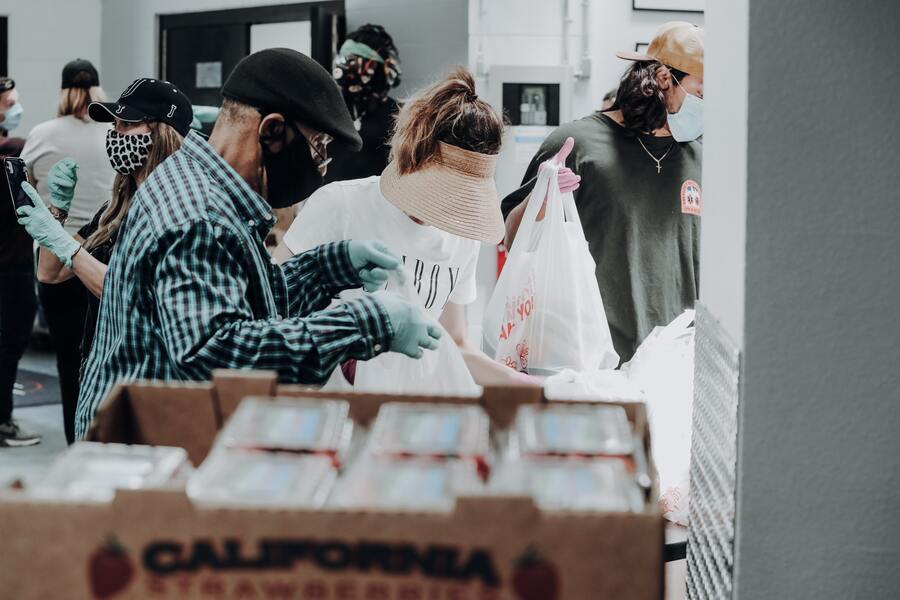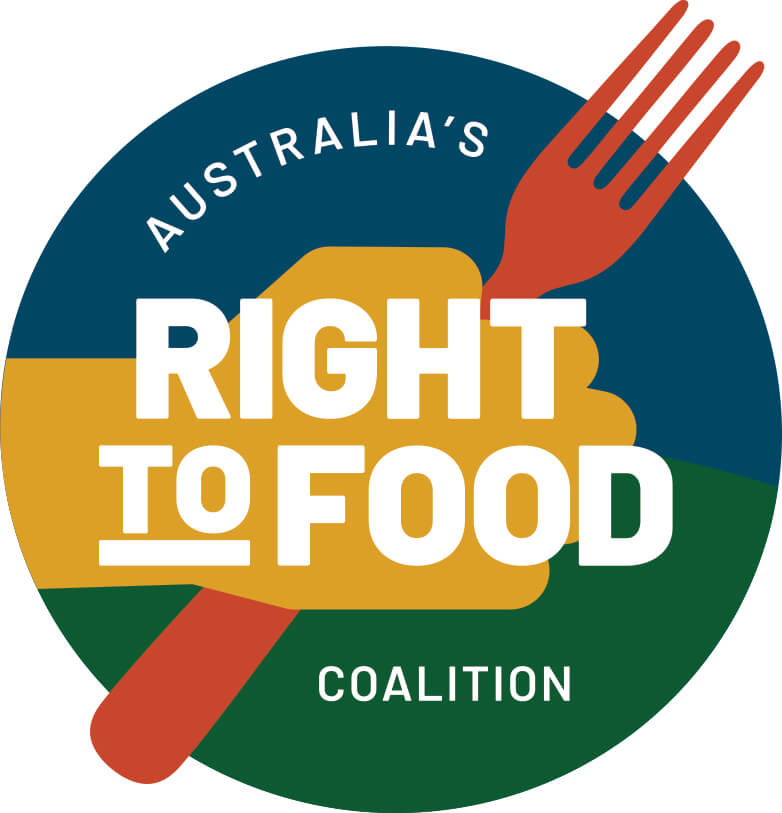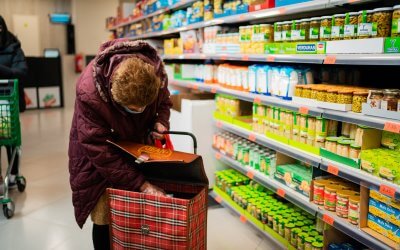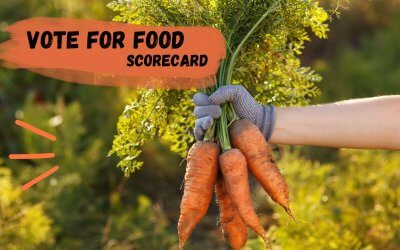Impact of Food Insecurity in Australia
There is enough food in the world to feed everyone! But food insecurity is a significant issue affecting an estimated 5 million Australians in the last year, and encompasses a limited availability of food, cost, and accessibility to safe and healthy food. People experiencing food insecurity are often further disadvantaged through poor nutritional outcomes, reduced wellbeing, and increased occurrence of birth defects, kidney disease, obesity, mental health issues, cardiovascular disease, diabetes and nutrient deficiencies.
Hardship, poverty and chronic disease are all risk factors and outcomes of food insecurity. 70% of food insecure Australians have had a long period of unemployment in their lives, 42% have experienced domestic violence, and 38% have raised children as a single parent for a long period. Over 3 million people in Australia are estimated to live below the poverty line and are more vulnerable to food insecurity. It is evident that food insecurity is linked to a range of health, environmental and financial implications. This issue has grown in severity during 2020 with many communities being impacted by the Australian bushfires and COVID-19, resulting in loss of employment, income and housing.
Food Insecurity in the Hospital Setting
I have witnessed these implications of food insecurity during my hospital placements as a student dietitian. The role of dietetic intervention in the hospital setting is to manage or treat a range of diseases, and improve the patient’s nutritional status. Malnutrition is a key focus for intervention as it slows recovery, causes muscle wasting, and increases the risk of other health complications. However, some patients are already malnourished prior to hospital admission due to food insecurity! Many geriatric patients cannot afford groceries due to the costs of housing, medications and other assistive services. Others have limited access to food for a range of reasons outside of their control, such as mobility, mental and physical health issues, which has been further complicated by COVID-19 as individuals may not feel safe to visit their local supermarket.
Some patients also have limited knowledge about nutrition and preparing healthy meals. In Australia, only 41% of adults are estimated to have adequate health literacy skills. 52% of adults consume the recommended serves of fruit, and only 8% consume the recommended serves of vegetables. This highlights the need for an increase in food security, improvement in nutrition knowledge and skills in the community as factors for enhancing overall health.
Dietitians aim to improve the nutritional status of their patients and provide recommendations for continued improvement after discharge. However, this is an almost impossible task when the patient does not have a regular supply of healthy and affordable food in the community! In situations like this, the focus shifts to providing the patient with contacts for cheap or free meal services and charities providing support, giving them access to discounted supplement drinks to improve protein and energy intake in cases of malnutrition, and connecting them with a social worker to assist them with obtaining financial aid, pensions, meal services and support workers. Although Australia is considered a ‘developed’ country, food insecurity has a devastating impact on many Australians.
Charities assisting Food Insecure Communities
There are a range of food relief and food rescue organisations such as OzHarvest, Foodbank Australia and Secondbite. They aim to decrease the occurrence of food insecurity and provide various support services. I volunteer with OzHarvest, which is a non-profit organisation that rescues food and provides it to over 1300 charities across Australia to feed those in vulnerable situations. Ozharvest and similar organisations also aim to tackle the issue of food waste, which contributes to climate change by producing 8% of all greenhouse gases. Each week, Ozharvest rescues over 180 tonnes of food which is either redistributed, or used in the Cooking for a Cause program to prepare meals for charities. The OzHarvest Market also operates as a rescued food supermarket, with a ‘Take what you need, give if you can’ philosophy. The charity has over 1500 volunteers to make all of this possible!
OzHarvest also provides education to those in vulnerable communities through the Nutrition Education Skills Training (NEST), Nourish, and Food Education and Sustainability (FEAST) programs. I have assisted with facilitating the FEAST program, which gives primary school children the opportunity to practice cooking skills, develop healthy and affordable recipes, reduce their food waste and learn about nutrition. I have helped implement the FEAST program at a local primary school, and have experienced how valuable the education is to students! Many have no previous cooking experience, and are eager to learn to cook and then eat their creations. At the conclusion of the program, the school develops a cookbook filled with easy and nutritious recipes that can be made on a budget. Programs like this are essential for teaching the foundational skills of cooking, nutrition, understanding a recipe and planning a meal.
I have also volunteered with the Cooking for a Cause program, which involves cooking meals to donate to various charities. This program has contributed to the 120 million meals that have been delivered since the founding of OzHarvest! This is a substantial effort to assist those experiencing food insecurity in Australia!
Role of Government in Reducing Food Insecurity
Organisations like Ozharvest and Foodbank exist because there is a need for food in the community that is not currently being fulfilled. Food insecurity exists as a result of poverty. In Australia, there are 3.2 million people living below the poverty line, which is when a single adult lives off less than $457 per week, or a family with 2 children lives off less than $960 a week. However, a single adult living in Australia requires approximately $600 per week to afford rent, food, clothing and other essential living supplies, while a family with 2 children requires $1170. This means that those living in poverty have minimal income to spend on food, with the majority paying their rent.
The gap of inequality is growing, which raises the cost of living, making it increasingly difficult for people living below the poverty line to afford the basic needs of living. There are a range of issues contributing to this gap such as legislation for minimum wage, support payments for unemployment, youth allowance, pensions and parenting income remaining below the cost of living, and the continually increasing costs of housing, food and transport. In order for the issue of food insecurity to be effectively targeted on a national level, greater government intervention is required to improve support to those living below the poverty line. This could include increasing welfare payments to provide adequate funds to cover increasing living costs, improving employment conditions and job security, ensuring supermarkets are located within accessible distances of communities, supporting international students, increasing the minimum wage, providing greater employment opportunities, and reducing the inequality gap. The government has the capacity to increase support for those living below the poverty line and equip them to afford housing and safe, healthy food, thus reducing poverty and subsequently food insecurity.
What can I do about food insecurity?
Even at an individual level, we can help reduce food insecurity in our local community. Households on average waste 1 in 5 shopping bags of all food purchased, which equates to $3800 each year! But there are some simple changes we can make to reduce our food waste and save money on groceries:
- Plan your meals for the week ahead
- Write a grocery list and only purchase what you need
- Don’t shop on an empty stomach
- Use older foods in your fridge first
- Freeze leftovers
There are also a range of ways you can get involved in your community to help those experiencing food insecurity. Do you have some food that can be donated to a local charity? Or is there a local organisation where you could volunteer? Food insecurity is a real issue for many Australians, and significant change is needed at the individual, community and legislative levels to ensure that Australians have access to affordable, nutritious food.
About the author
My name is Emily Monro, and I am a student dietitian nutritionist in my final year of a Bachelor of Nutrition and Dietetics (Honours) at the University of Wollongong. I am passionate about improving nutrition education, cooking skills, reducing food waste, and improving access to healthy food in the community! To see more of what I do or to get in contact, please check out my social media accounts:
Instagram: @sustainnutrition
Facebook: @emilymonronutrition





